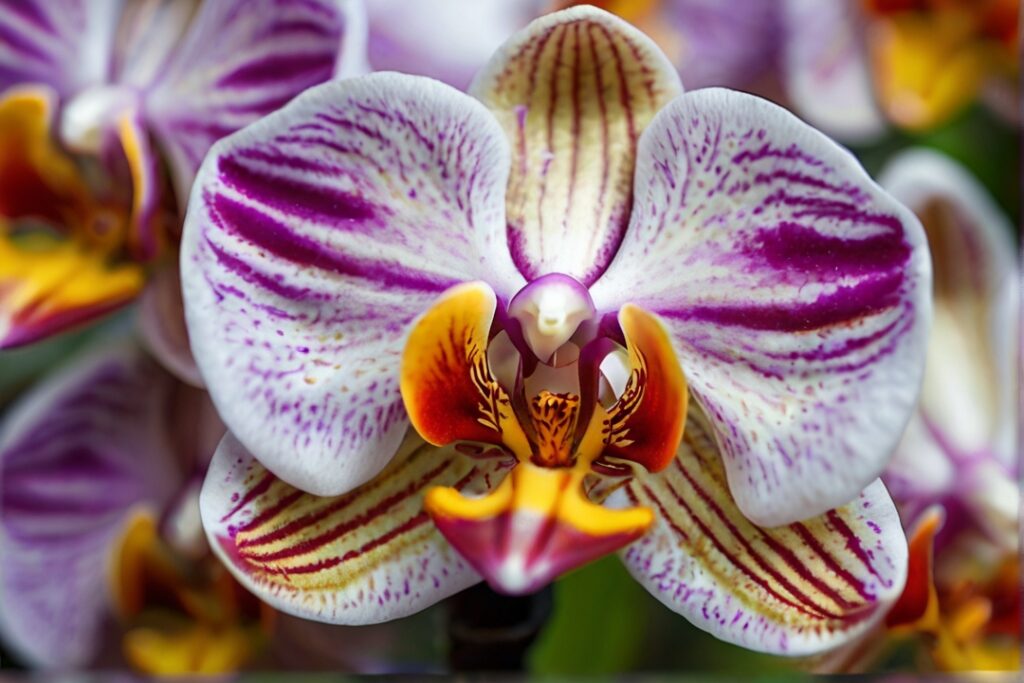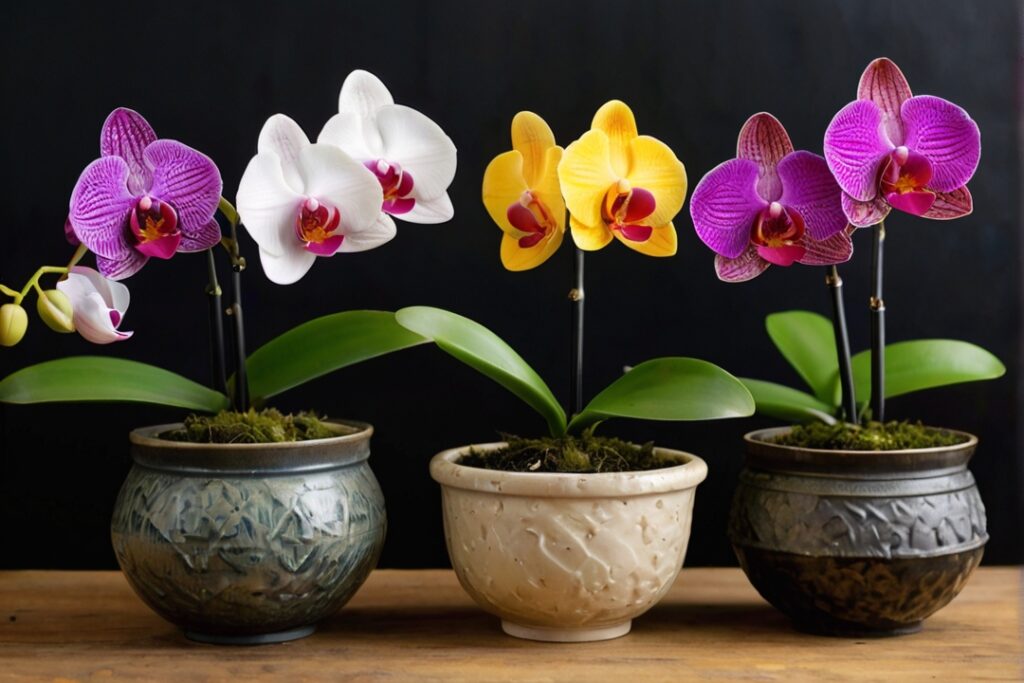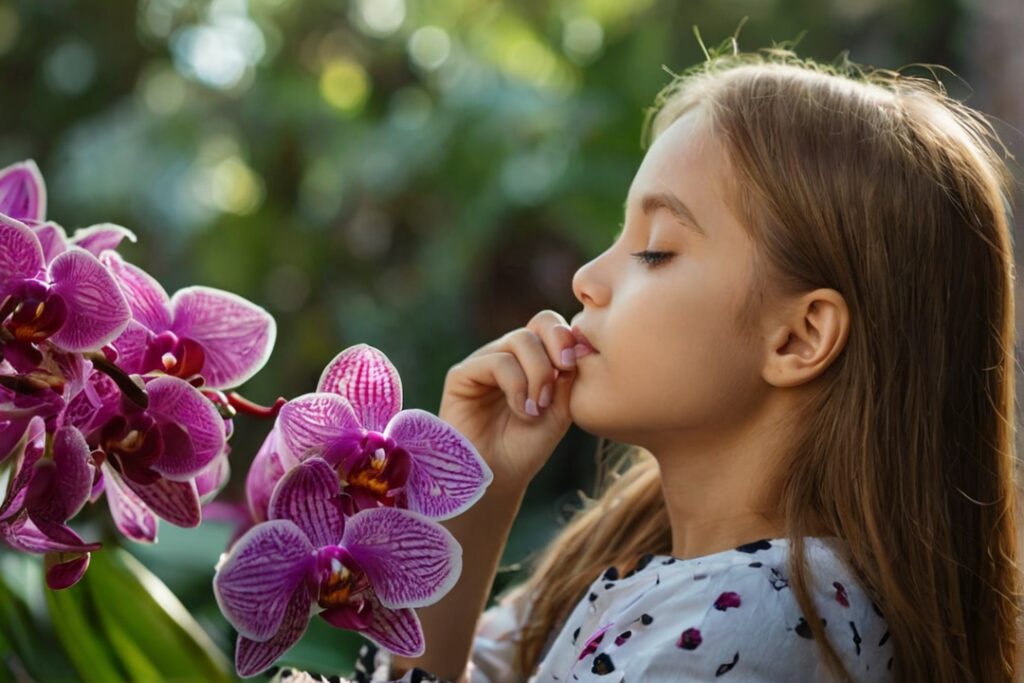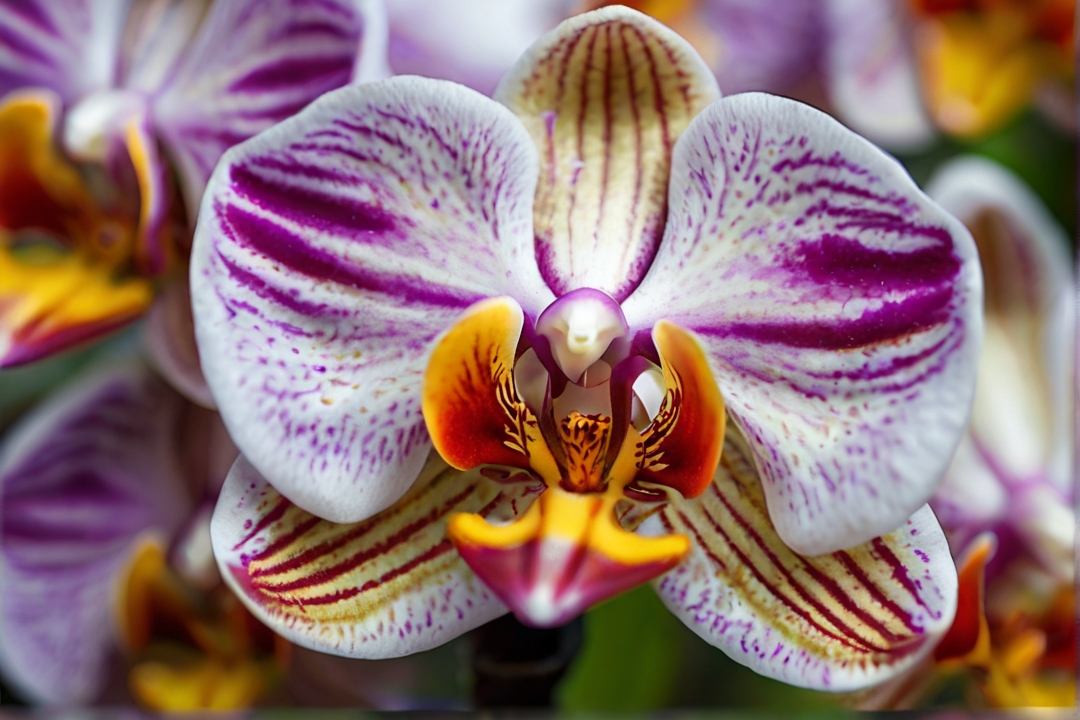Exotic Orchids are one of the most popular and sought-after flowers in the world. Their stunning beauty and various colors and patterns have captivated people’s hearts for centuries. This article will delve into the fascinating world of exotic orchids, exploring their beauty, history, cultivation, fragrance, diversity, conservation, art and literature, natural habitat, and their role in modern medicine and science.
Table of Content
- Exotic Orchids Growing Guide
- The Beauty of Exotic Orchids: A Visual Feast of Colors and Patterns
- Orchids and Their Role in History and Culture
- The Fascinating World of Exotic Orchids Cultivation and Propagation
- Orchids and Their Connection to Fragrance and Aromatherapy
- The Diversity of Exotic Orchids: From Miniature to Giant Varieties
- The Importance of Orchid Conservation and Preservation
- Orchids in Art and Literature: A Symbol of Beauty and Mystery
- Orchids in the Wild: A Journey Through Their Natural Habitat
- Orchids and Their Role in Modern Medicine and Science
- FAQs About Exotic Orchids
Exotic Orchids Growing Guide

Growing exotic orchids involves understanding their unique requirements, which mimic their natural tropical or subtropical habitats. Here is a step-by-step guide to help you cultivate these beautiful plants:
Identify Your Orchid: Knowing the specific genus and species of your orchid, such as Phalaenopsis, Cattleya, or Vanda, will guide your care strategy, as different orchids have varied requirements for light, water, and temperature.
Selecting the Right Growing Medium: Orchids typically don’t grow in soil. Epiphytic orchids prefer bark or a unique orchid potting mix that retains moisture yet allows airflow. Terrestrial orchids might thrive in a finer orchid potting mix. The choice between orchid bark and potting mix depends on the orchid type, with the bark being suitable for most epiphytes.
Lighting: Exotic orchids need bright but indirect light. The direction of the window (north, east, northeast, northwest for shade-loving orchids; south, west, southwest, southeast for high-light orchids) affects the amount of light your orchid receives. Adjust placement based on the orchid’s specific light needs.
Watering: Orchids absorb water from both their growing medium and the air. Watering frequency depends on the container size, the growing medium, and the orchid type. A general rule is to water weekly but adjust based on the dryness of the growing medium.
Fertilizing: Orchids benefit from a lean diet. During watering, use a liquid general-purpose plant food at quarter strength every other week. This schedule ensures the orchids receive nutrients without the risk of nutrient salt buildup.
Temperature and Humidity: Exotic orchids prefer a humidity level of at least 50 percent and temperatures that mimic their natural habitat. Grouping plants or placing them in a kitchen or bathroom can increase humidity around them.
Propagation: You can propagate exotic orchids through division, back bulbs, or offshoots (keikis), depending on the orchid type. This allows you to expand your collection by separating mature plants or encouraging the growth of new plants from parts of the existing ones.
The Beauty of Exotic Orchids: A Visual Feast of Colors and Patterns

Orchids are known for their exquisite beauty and unique appearance. They come in various colors, from vibrant reds and purples to delicate pinks and whites. Some orchids even have multiple colors on a single flower, creating a mesmerizing display of hues. The patterns found on orchids are equally captivating, with intricate lines, spots, and stripes that add to their allure.
One example of a unique color found in orchids is the blue Vanda coerulea. This rare orchid species is known for its striking blue petals resulting from a pigment called anthocyanin. Another example is the Paphiopedilum rothschildianum, the Rothschild’s slipper orchid. This orchid is vibrant purple with intricate patterns resembling a leopard’s spots.
The beauty of orchids serves a purpose beyond aesthetics. Orchids have evolved to attract pollinators such as bees, butterflies, and birds with their vibrant colors and enticing patterns. By luring these pollinators with their beauty, orchids ensure their survival by facilitating the transfer of pollen from one flower to another.
Orchids and Their Role in History and Culture

Orchids have played a significant role in history and culture throughout the ages. In ancient Greece, orchids were associated with fertility and virility, often used in love potions. In China, orchids symbolize refinement, beauty, and elegance and have been cultivated for thousands of years. In Japan, orchids are considered a symbol of luxury and are often used in traditional tea ceremonies.
Orchids have also been a source of inspiration for artists, writers, and musicians. Orchids have been depicted in paintings, sculptures, and ceramics. Literature has featured them as symbols of beauty, mystery, and sensuality. In music, orchids have been referenced in songs and used as metaphors for love and desire.
In ancient civilizations such as the Aztecs and the Mayans, orchids held a sacred place. They were believed to have healing properties and were used in religious ceremonies. Orchids were also used as offerings to the gods and were considered a symbol of power and wealth.
The Fascinating World of Exotic Orchids Cultivation and Propagation

Cultivating orchids can be a challenging but rewarding endeavor. Orchids require specific growing conditions, including the right amount of light, humidity, temperature, and air circulation. They also need well-draining soil or a specialized orchid mix to thrive.
Propagation of orchids can be done through various methods such as division, backbulb propagation, keiki propagation, and seed germination. Division involves separating the plant into smaller sections with their roots. Backbulb propagation consists of using the plant’s dormant back bulbs to grow new shoots. Keiki propagation is when a new plantlet grows from the mother plant’s base. Seed germination is a more complex process that requires specific conditions such as sterile media and controlled temperature.
One challenge in growing orchids is providing the right amount of water. Overwatering can lead to root rot, while underwatering can cause dehydration. Finding the balance between the two is crucial for the health and survival of the orchid.
There are also unique cultivation techniques used for certain orchid varieties. For example, some orchids, such as the Vanilla orchids, require hand pollination to produce vanilla beans. This delicate process involves transferring pollen from the male part of the flower to the female part using a small brush or toothpick.
Orchids and Their Connection to Fragrance and Aromatherapy

Orchids have a long history of being used in fragrance and aromatherapy. The delicate and intoxicating scent of orchids has made them famous for perfumes and essential oils. The fragrance of orchids is often described as floral, sweet, and exotic.
In perfumery, orchids are used as se ornotesdle notes to the depth and complexity of a fragrance. They can be blended with other floral scents or combined with citrus or woody notes to create a unique and captivating perfume.
In aromatherapy, orchid essential oils are used for their therapeutic benefits. The scent of orchids is believed to have a calming and uplifting effect on the mind and body. It is often used to reduce stress, anxiety, and insomnia. Orchid essential oils are also used in skincare products for their moisturizing and anti-aging properties.
The Diversity of Exotic Orchids: From Miniature to Giant Varieties
Orchids come in a wide range of sizes and shapes, making them one of the most diverse plant families in the world. Some orchids are so tiny that they can fit on the tip of your finger, while others can grow up to several meters tall.
Miniature orchids are prized for their compact size and delicate beauty. They are often grown in terrariums or small pots, making perfect additions to indoor gardens or small spaces. Some examples of miniature orchids include the Masdevallia species, which has small, colorful flowers, and the Pleurothallis species, which has tiny, intricate blooms.
On the other end of the spectrum, there are giant orchids that can reach impressive sizes. The Grammatophyllum speciosum, also known as the tiger orchid, is one of the giantst orchids in the world. It can grow up to three meters tall and produce massive clusters of flowers. Another example is the Phragmipedium kovachii, which has large, showy blooms that can reach up to 20 centimeters in diameter.
Each orchid variety has its unique characteristics and requirements for growth and care. Some orchids prefer bright, indirect light, while others thrive in low-light conditions. Some orchids require cooler temperatures, while others prefer warmer climates. Understanding the specific needs of each orchid variety is essential for successful cultivation.
The Importance of Orchid Conservation and Preservation
Orchids face numerous wild threats, including habitat loss, climate change, illegal trade, and overcollection. Many orchid species are endangered or at risk of extinction. This makes conservation and preservation efforts crucial for their survival.
Conserving and preserving orchids involves protecting their natural habitats, implementing sustainable harvesting practices, and raising awareness about their importance. Botanical gardens and conservation organizations are vital in maintaining orchid species through seed banks, propagation programs, and habitat restoration projects.
One successful example of orchid conservation is the Million Orchid Project in Florida. This project aims to reintroduce native orchids into urban environments by growing them in nurseries and planting them in public spaces. The project has been successful in increasing the population of native orchids and raising awareness about their importance.
Orchids in Art and Literature: A Symbol of Beauty and Mystery
Orchids have long been a source of inspiration for artists and writers. Orchids have been depicted in paintings, sculptures, and ceramics. They have been used as symbols of beauty, elegance, and sensuality. Orchids have also been featured in literature as metaphors for love, desire, and mystery.
One famous example of orchids in art is the painting “The Orchid” by Henri Rousseau. This vibrant and dreamlike painting depicts a lush tropical landscape with a large orchid. The painting captures the exotic beauty and allure of orchids.
In literature, orchids have been used as symbols of beauty and desire. In the novel “The Orchid Thief” by Susan Orlean, orchids are used as a metaphor for obsession and the pursuit of beauty. The book explores the world of orchid collectors and the lengths they go to obtain rare and exotic orchids.
Orchids in the Wild: A Journey Through Their Natural Habitat
Orchids can be found in a wide range of environments around the world. They are found in tropical rainforests, temperate forests, grasslands, deserts, and even mountainsides. Each orchid species has its specific habitat requirements, which is why they can be found in diverse locations.
In tropical rainforests, orchids thrive in the humid and shaded understory. They often grow on trees or rocks, using them as support structures. These types of orchids are known as epiphytes. Some examples of epiphytic orchids include the Phalaenopsis species, commonly found in Southeast Asia, and the Cattleya species, native to Central and South America.
In temperate forests, orchids grow on the forest floor or fallen logs. These types of orchids are known as terrestrial orchids. Some examples of terrestrial orchids include the Calypso bulbosa, also known as the fairy slipper orchid, which is found in North America, and the Cypripedium species, also known as lady’s slipper orchids, which are located in Europe and North America.
In deserts, orchids have adapted to survive in harsh and arid conditions. They often have succulent leaves and thick roots to store water. Some examples of desert orchids include the Eulophia species found in Africa and the Middle East and the Dendrobium kingianum, native to Australia.
Orchids and Their Role in Modern Medicine and Science
Orchids have been used in traditional medicine for centuries due to their therapeutic properties. Modern medicine studies orchids for their potential uses in treating various health conditions.
Some orchids contain antimicrobial compounds, making them effective against bacteria and fungi. These compounds can be used to develop new antibiotics and antifungal drugs. Orchids also contain antioxidants, which can help protect the body against oxidative stress and reduce the risk of chronic diseases such as cancer and heart disease.
Orchids are also being studied for their potential uses in regenerative medicine. Some orchid species can regenerate damaged tissues and organs. Scientists are exploring how these regenerative properties can be harnessed to develop new treatments for injuries and diseases.
In conclusion, the world of exotic orchids is a fascinating one. From their stunning beauty to their historical and cultural significance, their cultivation challenges, and their therapeutic properties, orchids have captivated people for centuries. Their diversity, conservation efforts, role in art and literature, natural habitat, and potential uses in modern medicine and science make them a truly remarkable flower. Whether you are a seasoned orchid enthusiast or just beginning to explore the world of orchids, there is always something new and exciting to discover.
FAQs About Exotic Orchids
What are some common pests and diseases that affect exotic orchids?
Common pests that affect exotic orchids include aphids, spider mites, scale insects, mealybugs, and thrips. Additionally, orchids can be susceptible to fungal and bacterial diseases such as root rot, leaf spot, and powdery mildew. Regular inspection and prompt treatment with appropriate pesticides or fungicides can help manage these issues.
How long do exotic orchids typically live?
The lifespan of exotic orchids varies depending on the species and how well they are cared for. Some orchids can live for decades under optimal conditions, while others may have shorter lifespans. With proper care, many exotic orchids can live for 10-15 years or more, and some can even live for several decades.
Are there any specific fertilizers recommended for exotic orchids?
Specialized orchid fertilizers are available and are often recommended for exotic orchids. These fertilizers are formulated to provide the specific nutrients that orchids need, typically with a higher concentration of nitrogen during the growing season and a higher concentration of phosphorus during the blooming season. It’s essential to follow the manufacturer’s instructions for application and to avoid over-fertilizing, which can damage the orchid’s roots.
Can I grow exotic orchids hydroponically?
Yes, exotic orchids can be grown hydroponically. However, finding the right balance of nutrients and water for each orchid species may require some experimentation and adjustments. Hydroponic growing can provide excellent aeration to the orchid’s roots and may reduce the risk of overwatering. Specialized hydroponic systems designed for orchids are available, or hobbyists can create their systems using inert growing media such as clay pellets or coconut coir.
Do exotic orchids require pruning or trimming?
Exotic orchids generally do not require extensive pruning or trimming. However, removing dead or yellowing leaves, spent flower spikes, or damaged roots can help maintain the overall health and appearance of the orchid. Care should be taken to use sterile tools to prevent the spread of disease, and pruning should be done carefully to avoid injuring the orchid.
Can I use tap water to water my exotic orchids, or do they require distilled or rainwater?
Tap water can often be used to water exotic orchids. Still, it’s essential to be aware of the mineral content and pH of the water. Some orchid species are sensitive to salts and minerals found in tap water, which can accumulate in the growing medium over time and cause damage to the roots. Distilled or rainwater may be preferable in areas with hard water to avoid these issues. Allowing tap water to sit for 24 hours before watering can help reduce the chlorine content, which can harm orchids.
How do I know if my exotic orchid receives the right amount of light?
Monitoring the color and growth of the leaves can help determine if an exotic orchid is receiving the right amount of light. Ideally, the leaves should be medium green; dark green leaves may indicate insufficient light, while pale or yellowing leaves may indicate too much light. Additionally, observing the orchid’s growth habits can provide clues: if it produces long, leggy growth or fails to bloom, it may not be receiving enough light, whereas if the leaves become sunburned or the plant becomes stunted, it may be receiving too much light.
Can I use artificial light to supplement natural light for my exotic orchids?
Artificial light can supplement natural light for exotic orchids, especially in indoor environments where natural light may be limited. Full-spectrum fluorescent or LED grow lights are recommended, as they provide the wavelengths of light that orchids need for photosynthesis. Position the lights a few inches above the orchids and adjust the duration of light exposure based on the specific needs of the orchid species. Artificial lighting can be particularly beneficial during winter when daylight hours are shorter.

